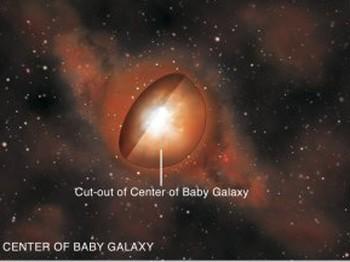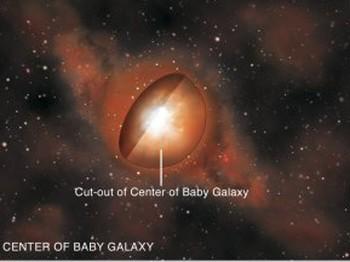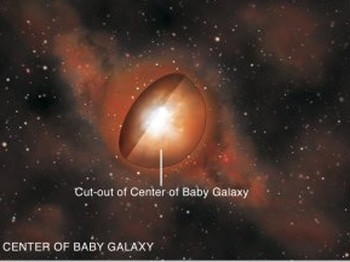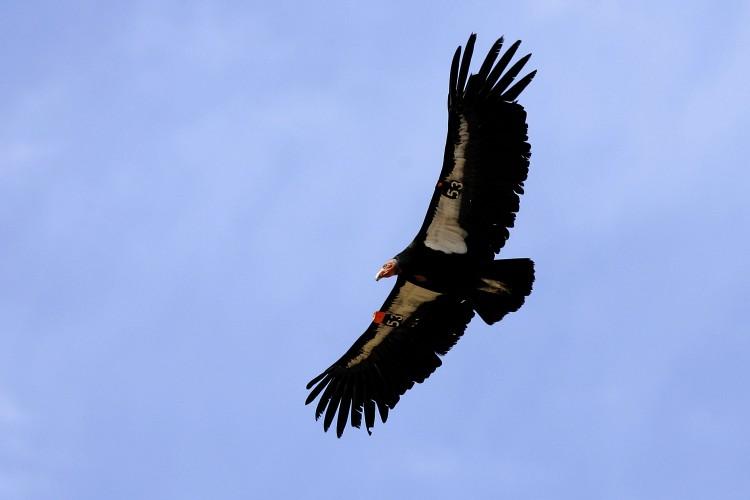Baby Black Holes Detected by Chandra
Astronomers have detected black holes in galaxies as far as 13 billion light-years from Earth, perhaps the earliest black holes to form in the universe, using NASA’s Chandra X-Ray Observatory.

Artist's impression of an infant galaxy less than one billion years after the Big Bang. The blue regions mark rapid star formation. A core cut-out shows very bright radiation from galaxy's center from a rapidly growing supermassive black hole, veiled by dust and gas. NASA/CXC/M.Weiss
|Updated:





